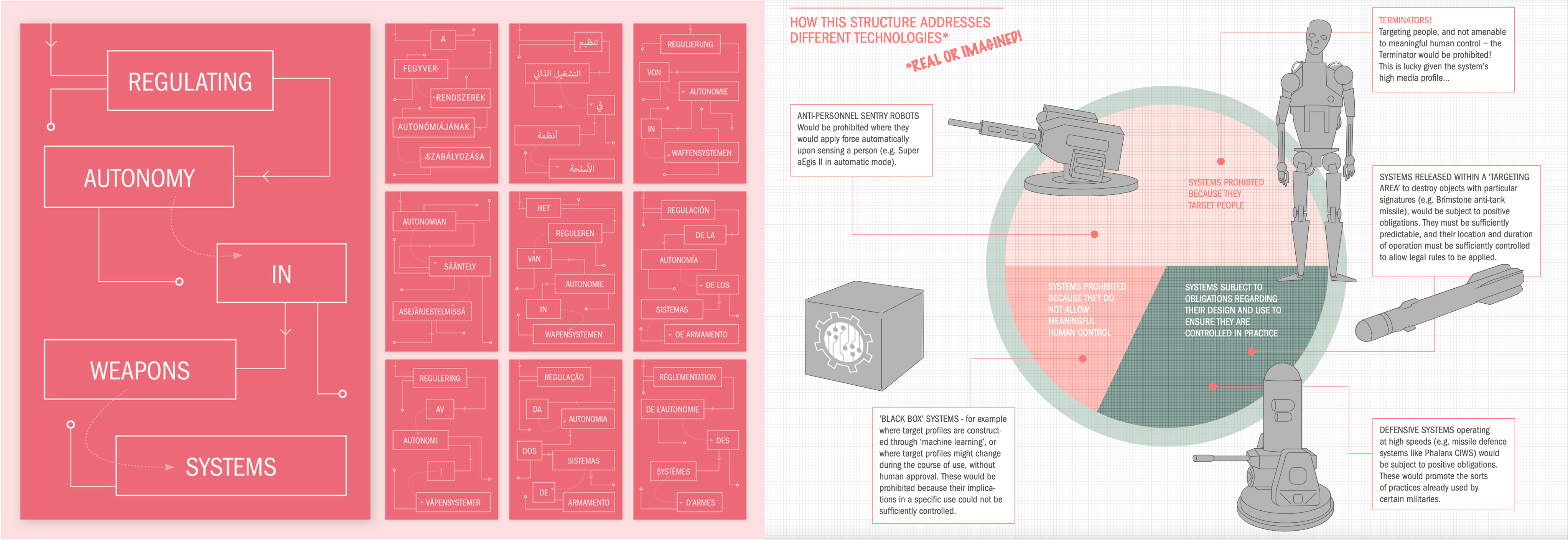
21.10.20
Key resource: Regulating autonomy in weapons systems
By Elizabeth Minor & Richard Moyes
Structuring a treaty on autonomous weapons systems effectively, to respond to key concerns
Our new leaflet ‘Regulating autonomy in weapons systems’ (now available in 10 languages) explains with graphics and visuals a basic model of how a treaty to address autonomous weapons could be structured – and illustrates how that structure responds to the concerns raised by increasing autonomy in weapons systems.
For us, there are two key problems that we need to work together to solve:
- firstly, to decide which systems within the scope of discussion about autonomous weapons are fundamentally unacceptable; and
- secondly, to work out how can human control be maintained over the remaining systems in this area, in order to adequately uphold both legal obligations and more profound moral and ethical principles.
An effective structure for international legal regulation would prohibit certain configurations – such as systems that target people, and those that can’t be meaningfully controlled – and require positive obligations for meaningful human control over others, within a broad scope of sensor-based weapons systems that employ a particular process to apply force: that of matching sensor inputs to a “target profile” of characteristics following a system’s activation, emplacement, or deployment.
This publication lays this out, looking also at how different types of systems within the scope of current international discussions would be affected.
We are working to avoid a dehumanised future, where machines can be tasked to kill and apply force without people understanding or being fully responsible for the consequences: international discussions on ‘autonomy’ in weapons systems now need to focus in detail on the specific components of a solution.
Recognition is already developing amongst states that prohibitions and positive obligations will be needed to preserve human dignity and ensure meaningful human control over weapons systems.
Available languages – download this resource in:
Please contact Elizabeth (elizabeth@article36.org) if you are interested in translation into other languages.
Read more